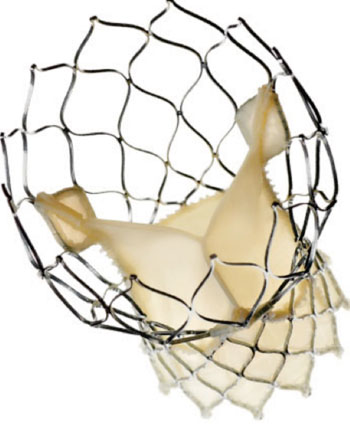Valve-in-Valve Replacement Obviates Second Heart Surgery
By HospiMedica International staff writers
Posted on 23 Apr 2015
An aortic “valve-in-valve” replacement system helps treat patients who have previously had a tissue aortic valve replacement and are in need of a second one.Posted on 23 Apr 2015
The CoreValve artificial heart valve can now be used in patients in need of replacement of a failed tissue aortic valve due to severe native calcific aortic stenosis or failure of a surgical bioprosthetic aortic valve, and who are at high risk for complications associated with traditional open-heart surgery. CoreValve is made of tissue obtained from the heart of a pig; for support, it is attached to a flexible, self-expanding metal frame made of nickel-titanium alloy. To implant the device, it is delivered compressed to the implantation site via transcatheter aortic valve replacement (TAVR).

Image: The Medtronic CoreValve system (Photo courtesy of Medtronic).
The procedure involves a catheter threaded through the blood vessels until it reaches the failed tissue aortic valve. It is then released from the end of the catheter, expanding on its own and anchoring itself to the old failed valve. Once the device is in place, it opens and closes properly, restoring the aortic valve function. The CoreValve system, a product of Medtronic (Minneapolis, MN, USA), was approved by the US Food and Drug Administration (FDA) as a replacement valve in patients who are infection-free; do not have a mechanical aortic heart valve; and who can tolerate blood thinners.
“The CoreValve System offers a less invasive treatment option for a significant number of patients with failed tissue aortic valves whose medical teams determine that the risks associated with repeat open-heart surgery are high or extremely high,” said William Maisel, MD, deputy center director for science and chief scientist in the FDA Center for Devices and Radiological Health (CDRH). “The approval is an important expansion of the authorized use of the transcatheter aortic valve replacement technology.”
TAVR aortic valve replacement, without the need for open heart surgery or cardiopulmonary bypass, is faster and less invasive than current open-heart procedures, and has so far been proven effective in high-risk and inoperable patients, and could soon become the standard of care, even in moderate and low surgical risk patients.
Related Links:
Medtronic














